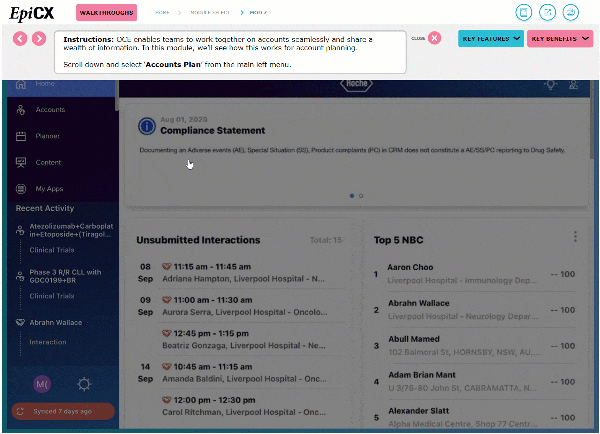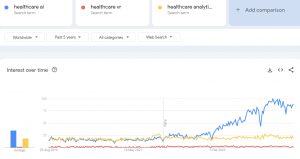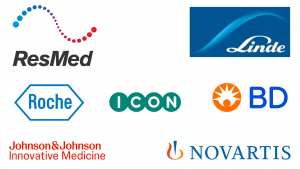Here we look at how the L&D team can have a huge positive impact in helping to meet the wider healthcare business goals of your organisation.
Learning and Development can be leveraged to reduce costs, improve patient safety and data security, and contribute to total quality improvement programmes.

Quite naturally, a healthcare L&D team will be very focused on the results under its direct control. These will primarily be around learning and performance outcomes, such as speed of onboarding and time to competency, effectiveness in key tasks, leadership development etc.
However, no department operates in a vacuum, and while at every senior management meeting an L&D leader will reaffirm the wider healthcare business goals and the context of their department, placing them more front of mind can help foster better cross-departmental collaboration.
If HR and L&D can develop strong relationships with the likes of Finance, Legal / Compliance and PR for example, it will no doubt help your department to negotiate for what you want and need down the line.
These principles are as relevant to public sector / NHS work as they are for private sector healthcare providers.
Quality Improvement
Regardless of new ideas, the latest trends and budget restrictions, Quality Improvement and the metrics against which it is measured will always be under scrutiny for a healthcare provider.
Areas of greatest focus will vary between providers. For example, if patient mortality is an issue under the spotlight, it is up to L&D to find or create the best training resources to help staff to understand various emergency situations like strokes, heart attacks or traumas, and others types of patient care scenario where diagnosis may be complex.
Learning from past events is also an essential part of improving quality of care. With Royal College of Physicians for example, we are training medical staff to use the software provided to log and analyse deaths in hospital – helping them to understand the patterns of mortality.
Healthcare providers are frequently asked to do more with less, and budget restrictions never reduce the drive for improvements in each of the key dimensions of quality – Safe, Effective, Person-centred, Timely, Efficient and Equitable.
Training that reflects the latest best practice in each of these areas, that is aligned to the specific needs of each job role, and that is made easy to access for even those working on variable shift patterns, can have a huge impact on quality improvement.
Increasing Efficiency & Reducing Costs
Any business will experience peaks and troughs in demand. However, healthcare providers can not simply close on certain days of the week or during the quieter hours to reduce costs.
Managing patient flow and reducing wait time to ensure good patient care during busy periods, while simultaneously looking to avoid waste from over-resourcing during quieter periods is a constant challenge for healthcare providers.
With Scottish Government for example, we are supporting L&D teams in drawing on Queuing Theory to help lessen peaks and troughs to reduce wait times, increase efficiency and improve patient care. This approach has been shown to reduce emergency surgery waiting times in hospitals, and we’ll be looking to help operational teams across NHS Scotland to achieve similar outcomes.
For global pharmaceutical and medical diagnostics company, Roche, we created software simulation training to help users get up to speed with a new system.

This is helping Roche to increase training efficiency by reducing time to competency and increasing staff confidence in using new software.
Decreasing Recovery Time
Many studies, including this one, have shown that good, uninterrupted sleep can have considerable impact on decreasing recovery time, as well as reducing patient mortality. L&D can support this goal by training staff in reducing ambient noise and light levels, and monitoring patients effectively without waking them. This can be achieved through both awareness of the issue and simple tweaks to staff routines to reduce disturbance.
Data Security
In May 2017, the NHS cyber attack was one of the most high profile data security breaches ever in the UK.
The breach affected at least 45 NHS organisations across England and Scotland. While many other companies and organisations were hit in 100+ countries in the same week, it was nonetheless extremely embarrassing for the UK government, and an incident that it is keen to avoid happening again.
The then Home Secretary Amber Rudd said that “Lessons must be learnt” and learning is key here as the issue was largely avoidable. L&D will be important in helping to ensure that best practice around software updates and upgrades is followed moving forward.
Ensuring Patient Safety
Ensuring patient safety by reducing accidents and incidents is always a critical business goal. Internal monitoring and being able to learn from mistakes or recurring issues is an essential part of this process, and an area where Learning and Development can have great influence.
We are working with Datix and HCA to help deliver staff training in the use of Patient Safety Software for logging and analysing safety-related incidents that occur in hospital.
For every type of patient care and for every management procedure, recommended best practice changes over time, and it’s up to L&D to roll out training in a strategic and timely manner.
This can make healthcare elearning extremely valuable as it can help to save a great deal of time and money in the creation of new learning materials.
Effective elearning can be a valuable part of the L&D toolkit in helping to meet healthcare business goals. If you’d like to learn about how Day One has helped numerous NHS hospitals and private healthcare companies to streamline and improve their training processes, contact us for an informal chat about your needs.


















